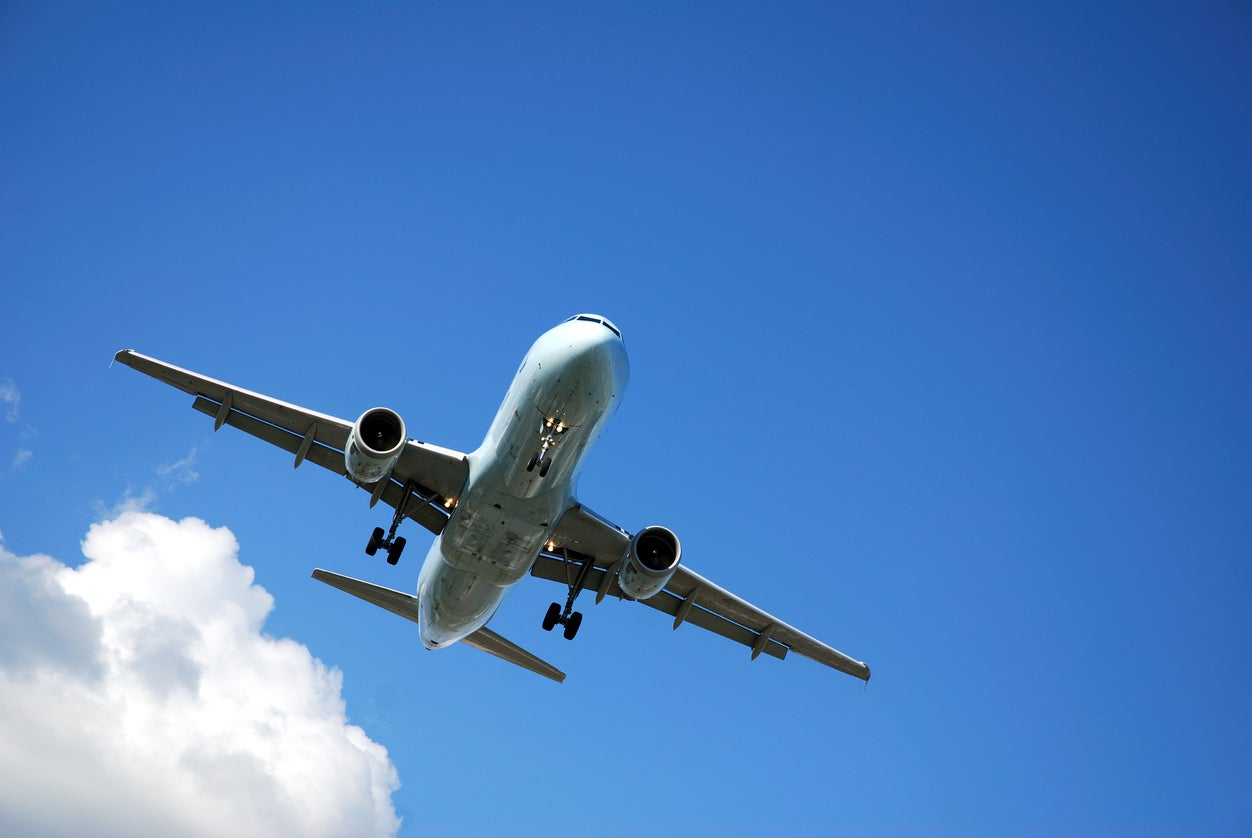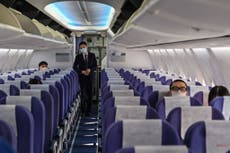Flying is safer than ‘grocery shopping or eating out’, says Harvard report
It found airlines’ multi-layered approach very effective against virus transmission on board

Your support helps us to tell the story
From reproductive rights to climate change to Big Tech, The Independent is on the ground when the story is developing. Whether it's investigating the financials of Elon Musk's pro-Trump PAC or producing our latest documentary, 'The A Word', which shines a light on the American women fighting for reproductive rights, we know how important it is to parse out the facts from the messaging.
At such a critical moment in US history, we need reporters on the ground. Your donation allows us to keep sending journalists to speak to both sides of the story.
The Independent is trusted by Americans across the entire political spectrum. And unlike many other quality news outlets, we choose not to lock Americans out of our reporting and analysis with paywalls. We believe quality journalism should be available to everyone, paid for by those who can afford it.
Your support makes all the difference.Flying is safer than everyday activities such as “grocery shopping or eating out” when it comes to contracting coronavirus, according to a new report from scientists at Harvard T.H. Chan School of Public Health.
The report was part of the Aviation Public Health Initiative (APHI), which studies “current aircraft, airline, and airport practices and their impact on public health during the Covid-19 pandemic”.
Phase One, the report that’s just been released, focuses on the gate-to-gate segment of flying, which starts from the moment when passengers go through the gate and board the aircraft to when they exit the gate at their destination. It doesn’t include the journey to the airport, or the time when passengers are inside the airport.
The report found that airlines have used a “layered approach” to reduce the risks of transmitting coronavirus on board flights since spring 2020.
The five layers include the “highly effective ventilation systems” installed on aircraft, known as High Efficiency Particulate Air (HEPA) filters; wearing of face masks; new disinfection procedures, especially for high-touch surfaces; health screening, including where passengers have to declare they’re not experiencing any symptoms; and better education and awareness around how to mitigate risks and identify symptoms.
Since the introduction of these new procedures, “there has been little evidence to date of onboard disease transmission”.
The report added: “This layered approach, with ventilation gate-to-gate, reduces the risk of SARS-CoV-2 transmission onboard aircraft below that of other routine activities during the pandemic, such as grocery shopping or eating out.”
Previous cases of onboard transmission all occurred before strict face mask policies were introduced, the report said.
However, the report’s authors suggested that “until there has been widespread vaccination, there remains the risk of infection in all walks of public life”, and those in high risk categories should consult their doctor before travel and other public activities.
This latest report echoes one released earlier this month by the International Air Transport Association (IATA), which found that people were more likely to be struck by lightning than catch coronavirus on board a flight.
IATA’s research said that between January and July this year, there have been just 44 cases where coronavirus is thought to have been transmitted during a flight. This number includes confirmed, probable and potential cases.
At the same time, the industry association said that 1.2 billion passengers have travelled by air, representing a one in 27 million probability of catching Covid-19 on a flight – significantly less than the chances of being struck by lightning, which are around one in 500,000 according to the US Centers for Disease Control and Prevention.



Join our commenting forum
Join thought-provoking conversations, follow other Independent readers and see their replies
Comments